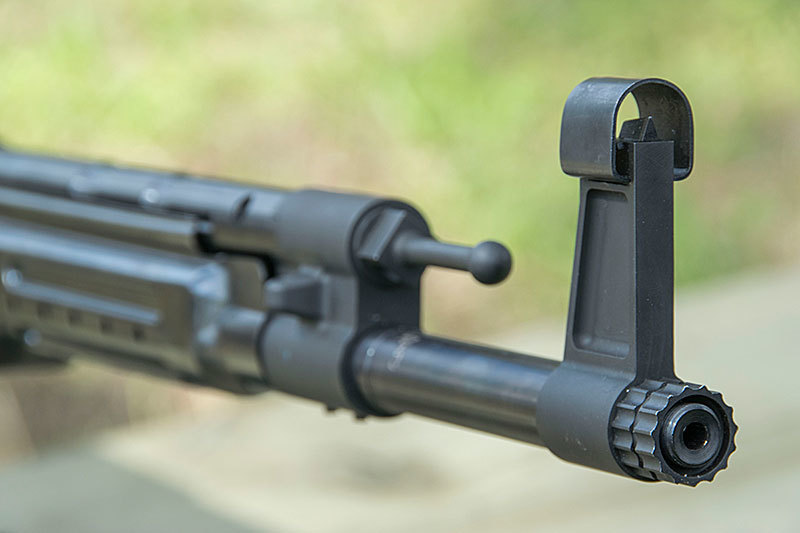Few firearms are as rare or as influential today as the Sturmgewehr. When it was first conceived, few could have imagined the impact the ugly stamped automatic rifle would have on the future of small arms development and armed conflict in general.
Back in 1938 when the German Small Arms Proofing Committee began taking a serious look at intermediate cartridges, most militaries were equipped with manually operated rifles chambered in full-powered rounds. The majority of this rounds are capable of neutralizing enemies past 1500 yards, and as a result produced tremendous recoil.
The reason the Small Arms Proofing Committee was researching reduced power rounds, was due to the results of an earlier study they conducted, which found most shootouts occurred within 440 yards. Furthermore, they also learned that few ever approached half the effective range of the then standard 7.92mm round.
Additionally, the larger caliber rounds were much heavier, and as a result the average infantryman could only carry a relatively small amount. One solution was to equip more soldiers with 9mm submachineguns, whose high rate of fire and lightweight ammo greatly increased a squad’s available firepower. But the round’s effective range was too short for anything outside of urban combat.
The German military needed a lightweight, automatic rifle chambered in an intermediate round that fed from detachable box-type magazines.
The solution: The Sturmgewehr model of 1944, or StG 44.
Those of you with a loose grasp of German have already figured out that Sturmgewehr translates to Storm Rifle or Assault Rifle. Indeed, the StG is the first true assault rifle in history. Meaning, a select-fire, shoulder-fired rifle chambered in an intermediate cartridge.
For the longest time the StG 44 was simply unobtainable to the vast majority of shooters. Transferable models are rare and so expensive only those with more than $10,000 to spare could even consider one. Then comes the logistical nightmare of tracking down the expensive magazines and uncommon 7.92mm Kurz ammunition.
Thankfully, Hill & Mac Gunworks of Atlanta heard the cries of would-be owners everywhere, announcing new production of the StG 44. Better yet, they’ll be releasing these civilian-legal semi-automatic rifles not only in the original 8mm Kurz round, but also 5.56mm, 7.92x39mm and even .300 blk!
So when I heard HMG was bringing two of their new rifles to Big 3 East in Daytona, Florida, I knew I had to get some trigger time on them.
While I was only able to fire a few magazines through the gun, it left a very positive impression on me. The rifle feels like a G3 chambered in 5.56mm. Which is to say, overly robust and quite heavy. Were this any other firearm, this would be cause for concern. However, in this instance it simply reassures shooters that HMG builds these guns just like the originals.
Unlike the originals though, the new caliber offerings don’t utilize proprietary magazines. In fact, the 5.56x45mm model uses STANAG or standard AR15 magazines. This is great news to shooters who want to run one in competition for fun at the range without having to invest in dozens of pricey mags.
Another piece of good news for more pragmatic plinkers is that the new StG 44s have a special mounting location for an optics rail, so shooters won’t have to rely on the archaic post and notch irons of the original. Purists can exhale a sigh of relief though, the rail segment mounts in place of the rear iron sight. So the original aesthetics aren’t ruined on optics-friendly models.
While the base models will be shipping soon, more options should become available late summer of 2016. Though these may be delayed given the overwhelming demand for the standard models. In fact, HMG totally sold out of their available stock within a few hours of announcing the rifles.







